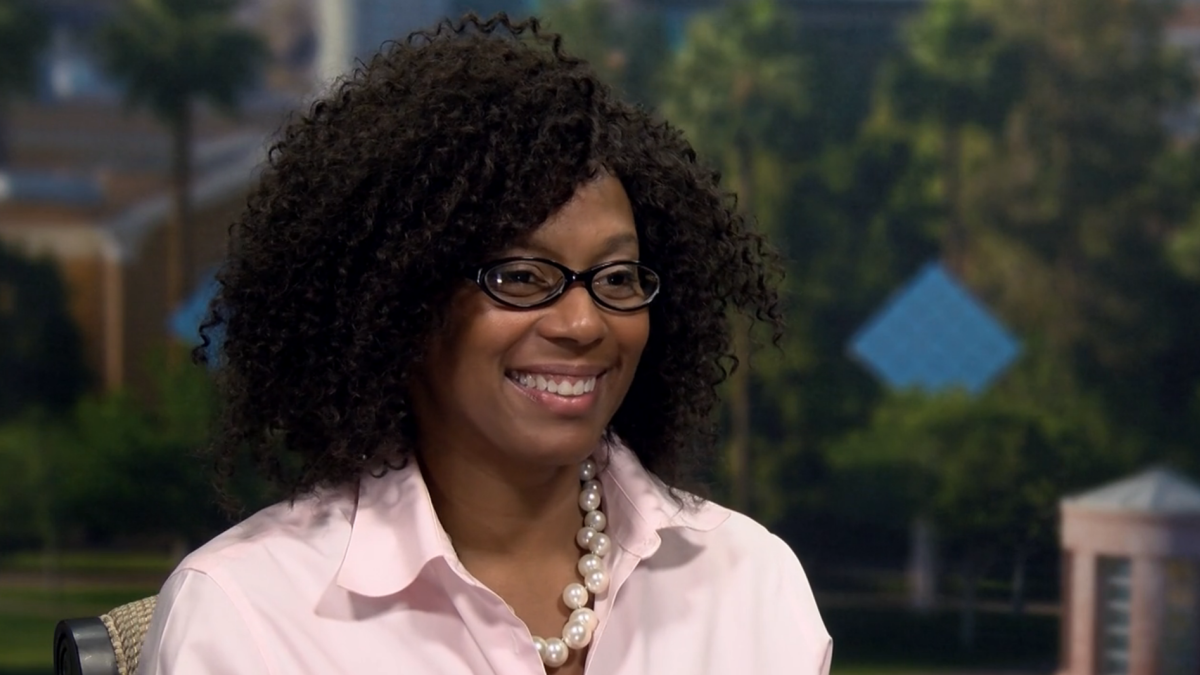CompuGirls founder on new Center for Gender Equity in STEM
ASU associate professor Kimberly Scott discusses her new White House-backed initiative

On Monday, Jan. 11, ASU will launch the Center for Gender Equity in Science and Technology, led by Dr. Kimberly Scott of the School of Social Transformation. The new center seeks to engage communities of scholars, organizations and policy makers to breakdown the systemic barriers that prevent girls and women of color from pursuing STEM (science, technology, engineering and math) options. Scott's work to enhance the opportunities for women and girls of color has earned her acclaim from the White House. She spoke to ASU Now about the launch of the new center.
Question: Tell us about this the Center for Gender Equity in Science and Technology.
Answer: It's a one-of-a-kind center in the nation that is exclusively focused on documenting, building capacity, building programs and advocacy specific to African American, Latina, Asian American and Native American women in their pursuits in science, technology, engineering and math.
There are three departments of the center. There is the knowledge-building arm that is dedicated to synthesizing as well as presenting research that is attainable and accessible to a large audience, so that we can really make sustained and scalable efforts through informed, empirical data. There is the capacity-building arm, which presents programs such as my nationally recognized Compugirls programs, which provides a series of multimedia courses to adolescent girls from digital storytelling to culturally responsive co-robotics. Then there is also the advocacy arm. It's within the advocacy arm that we attempt to culminate the work from the research arm and the capacity-building arm and to translate that information to decision makers such as policy makers, legislators and community grasstop and grassroot leaders.
Q: What need are you fulfilling with this center?
A: Well, there are several needs. First of all, the information that’s specific to the communities that I articulated, specifically African American, Latina, Asian American and Native American girls and women and their experiences in STEM. There hasn’t been a coordinated effort that synthesizes what’s happening to us in these disciplines. There hasn’t been a coordinated effort to try to do something that’s based on research. And so, on the practical level, one of the things the center is most interested in, is how can we take the information, the research, the theories, and translate that into practice and then also measure the impact of those practices in a way that we can make long-term changes.
Q: You speak very passionately about this. Does it resonate for you personally in some way?
A: It does, it does. Having taught in urban districts categorized as high needs and also having had the opportunity to work with education leaders as well as leaders in general. There is this commitment to trying to close the disparity among groups in particular. I’ve seen this in practice, I’ve seen this in the scholarly community, I’ve seen this in writing. So for me, not only as an African American woman but as a social justice activist, this is something that we all must take seriously if we are really interested in addressing inequity.
Q: Tell me a little bit about the National STEM Collaborative, and how this new center will work with it and fit into it.
A: The National STEM Collaborative is one of our signature programs within the advocacy arm of the center. It emerged from a meeting that I co-hosted with the White House Council on Women and Girls in July 2015. It was at that meeting that we had the opportunity of interacting with about 50 university college presidents and they ranged from HBCU, Historically Black Colleges and Universities, to tribal colleges, to Hispanic-serving institutions and to land grant. We had the opportunity to ask these leaders what are some of the issues specific to women of color in STEM, how should we address those issues and what are some of the success stories.
At the conclusion of that meeting, having analyzed the information that we heard, I made the announcement based on what I had assessed in that we need a collaborative. We need to further those conversations so that it wasn’t simply a chat and chew, but it led to something that can be actionable and can be impactful. So it was at that White House meeting that I announced the collaborative and since then we’ve had several other meetings as well as the development of programs specific to furthering the initiatives for the collaborative.
Watch the full interview here:
More Science and technology

Advanced packaging the next big thing in semiconductors — and no, we're not talking about boxes
Microchips are hot. The tiny bits of silicon are integral to 21st-century life because they power the smartphones we rely on, the cars we drive and the advanced weaponry that is the backbone of…

Securing the wireless spectrum
The number of devices using wireless communications networks for telephone calls, texting, data and more has grown from 336 million in 2013 to 523 million in 2022, according to data from U.S.…

New interactive game educates children on heat safety
Ask A Biologist, a long-running K–12 educational outreach effort by the School of Life Sciences at Arizona State University, has launched its latest interactive educational game, called "Beat the…